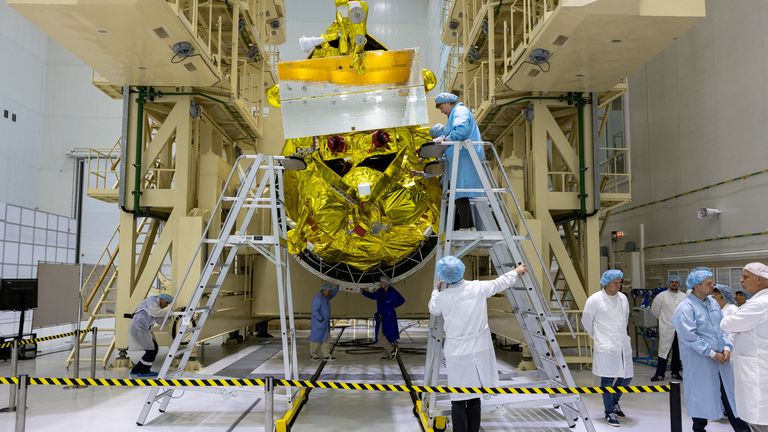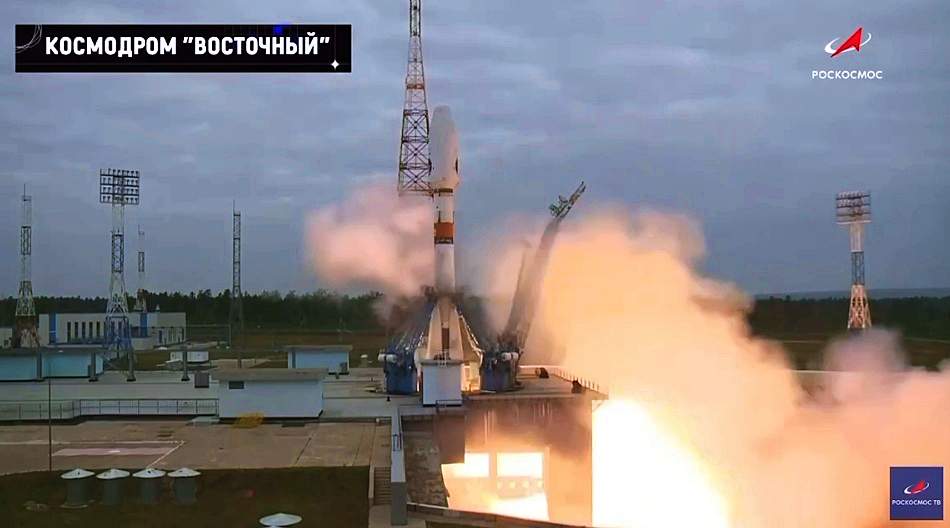Sun 20 August 2023:
Russia’s robot lander the Luna-25 spacecraft crashed into the moon after it had spun into uncontrolled orbit, the country’s space agency Roscosmos reported on Sunday.
Roscosmos said it lost contact with the spacecraft on Saturday after it ran into trouble while preparing for its pre-landing orbit. There had been reports of an “abnormal situation” that its specialists were analysing.
The spacecraft was scheduled to land on the south pole of the moon on Monday, racing to land on Earth’s satellite ahead of an Indian spacecraft, AP reports. It was Russia’s first Moon mission in almost 50 years.

Image:A picture taken from the camera of the lunar landing spacecraft Luna-25. Pic: Roscosmos
Russian officials had hoped that the Luna-25 mission would show Russia can compete with the superpowers in space despite its post-Soviet decline and the vast cost of the Ukraine war.
However, the space corporation said it had lost contact with the craft after it ran into unspecified trouble while preparing for the pre-landing orbit.
“The apparatus moved into an unpredictable orbit and ceased to exist as a result of a collision with the surface of the moon,” Roscosmos said in a statement on Sunday.11
Sanctions since 2014 and 2022 have hobbled the Russian space programme, cutting it off from western technology and funding.
The robot – which is the size of a small car – blasted off on a Soyuz rocket and entered the moon’s orbit on Wednesday.
The lunar south pole is of particular interest to scientists, who believe the permanently shadowed craters contain water.

Image:Specialists preparing ahead of Luna-25 launch.
The frozen water in the rocks could be transformed into air and rocket fuel, potentially allowing for longer human trips.
No country has ever actually ventured into the region before.
Russia was competing with India to achieve the ambitious landing, with the latter having launched its own lunar lander, Chandrayaan-3, last month.
Roscosmos has been eager to establish itself as a “space superpower” since its scientists were denied access to Western technology during the invasion of Ukraine.
The mission aimed to achieve the first ever landing near the south pole of Earth’s satellite, known for its difficult terrain.
The spacecraft reached lunar orbit earlier this week, sending back high-resolution photos of the dark side of the Moon. Its landing was scheduled to take place on or around August 21.
The main goal of the mission was to examine the lunar soil for the presence of ice, with Roscosmos also saying it wanted to test soft-landing technology and conduct long-term research on the lunar exosphere and the upper layer of the south pole’s surface.
SOURCE: INDEPENDENT PRESS AND NEWS AGENCIES
______________________________________________________________
FOLLOW INDEPENDENT PRESS:
TWITTER (CLICK HERE)
https://twitter.com/IpIndependent
FACEBOOK (CLICK HERE)
https://web.facebook.com/ipindependent
Think your friends would be interested? Share this story!





